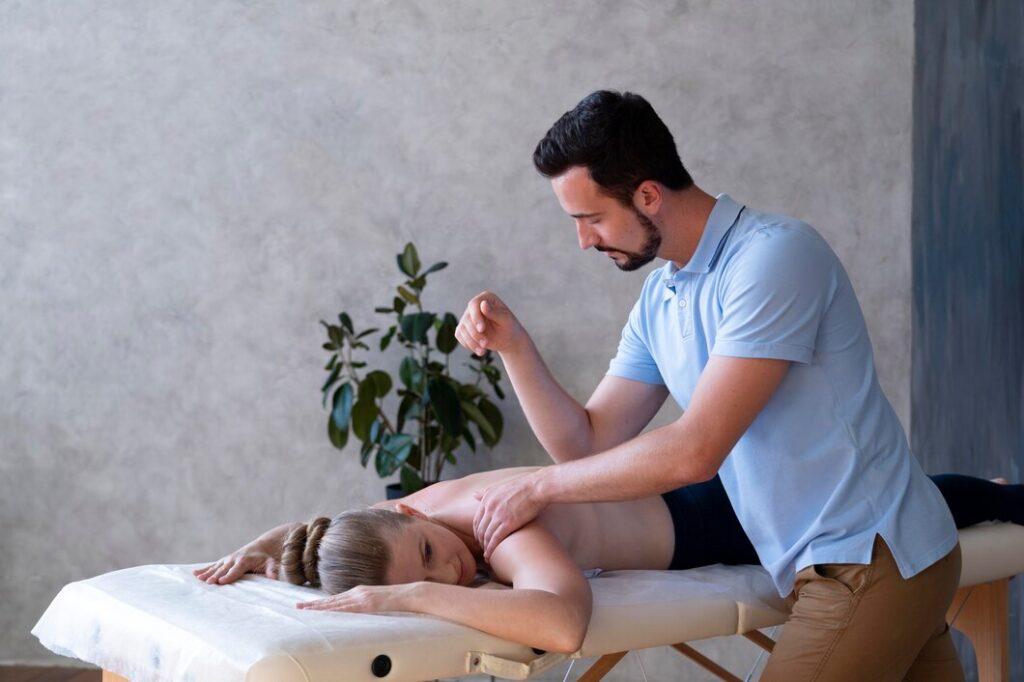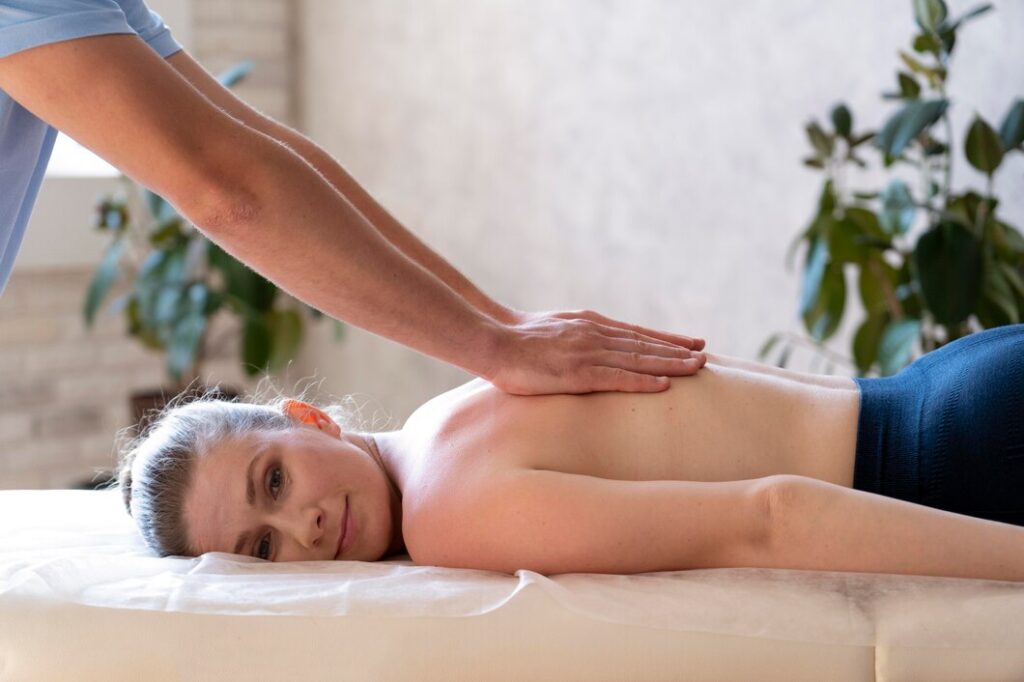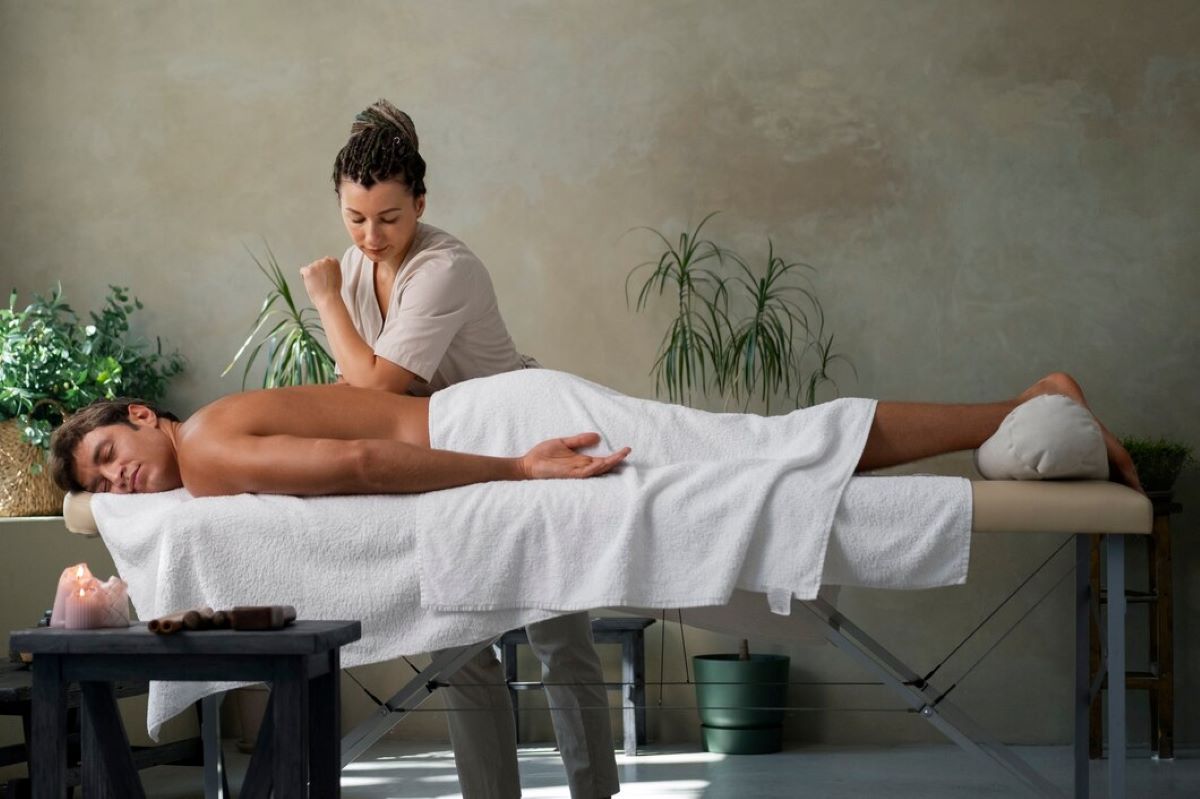Performing a full body massage for a client means that you are massaging all major body parts from head to toe.
Table of Contents
A full body massage is a holistic approach to relaxation and healing, offering numerous physical and mental benefits. From alleviating stress and muscle tension to improving circulation and enhancing overall well-being, a good massage can work wonders. Whether you’re a beginner or someone looking to refine their techniques, this guide will provide you with a comprehensive understanding of how to give a full body massage.
Preparation

Creating the Right Environment
The environment in which a massage takes place plays a crucial role in its effectiveness. Here are some key points to consider:
- Quiet and Calm Atmosphere: Choose a space where you won’t be disturbed. Soft, calming music can help create a relaxing ambiance.
- Comfortable Temperature: Ensure the room is warm enough to keep the recipient comfortable, as they will be undressed or partially covered.
- Proper Lighting: Dim lighting helps in relaxation. You can use candles or a soft lamp.
- Massage Table or Mat: A proper massage table is ideal, but a comfortable mat on the floor can also work.
- Cleanliness: Ensure the space and all tools are clean and hygienic.
Tools and Materials Needed
- Massage Oil or Lotion: Reduces friction and allows smooth gliding of hands.
- Towels and Sheets: For covering and ensuring privacy.
- Pillows or Bolsters: For supporting different body parts.
- Music Player: For playing soothing music.
Basic Techniques

Before diving into the step-by-step guide, it’s essential to understand some basic massage techniques. These techniques form the foundation of a good massage.
Effleurage
Effleurage involves smooth, gliding strokes over the skin, usually performed with the palms or fingers. It helps in warming up the muscles and spreading the massage oil evenly.
Petrissage
Petrissage involves kneading, rolling, and squeezing the muscles. This technique helps in releasing muscle knots and improving circulation.
Tapotement
Tapotement consists of rhythmic tapping or percussive movements, performed with the edge of the hand, fingers, or cupped hands. It stimulates the muscles and can be invigorating.
Friction
Friction involves deep, circular movements with the thumbs or fingers, targeting deeper muscle layers. It helps in breaking down adhesions and improving flexibility.
Vibration
Vibration is a shaking or trembling motion applied with the hands or fingers. It helps in relaxing muscles and releasing tension.
Step-by-Step Guide

Head and Neck
- Start with the Head: Begin with gentle effleurage on the forehead, moving towards the temples. Use your fingertips to apply light pressure and circular motions on the scalp.
- Focus on the Neck: Use both hands to apply effleurage from the base of the skull down to the shoulders. Use your thumbs to knead the muscles along the neck.
Shoulders and Upper Back
- Effleurage the Shoulders: Use long, sweeping strokes from the neck out to the shoulders. Apply gentle pressure and gradually increase it.
- Petrissage the Trapezius Muscles: Use your fingers to knead and squeeze the muscles at the top of the shoulders.
- Apply Friction: Use your thumbs to apply deep, circular movements on any knots or tight areas.
Arms and Hands
- Effleurage the Arms: Start at the shoulders and glide down to the hands. Use both hands to apply gentle pressure.
- Petrissage the Upper Arms: Knead and squeeze the biceps and triceps muscles.
- Massage the Hands: Use your thumbs to apply circular pressure on the palms and fingers. Gently pull and stretch each finger.
Chest and Abdomen
- Effleurage the Chest: Use gentle, sweeping strokes across the chest, avoiding direct pressure on the sternum.
- Circular Movements on the Abdomen: Use your fingertips to make circular motions around the navel in a clockwise direction. This helps in digestion and relaxation.
Lower Back and Hips
- Effleurage the Lower Back: Use long, sweeping strokes from the mid-back down to the hips.
- Petrissage the Lower Back: Knead and squeeze the muscles along the spine.
- Hip Massage: Use your palms to apply circular pressure on the hips, focusing on any tight areas.
Legs and Feet
- Effleurage the Legs: Start at the thighs and glide down to the feet. Use both hands to apply gentle pressure.
- Petrissage the Thighs and Calves: Knead and squeeze the muscles, focusing on any tight spots.
- Foot Massage: Use your thumbs to apply circular pressure on the soles and toes. Gently pull and stretch each toe.
Advanced Techniques

Trigger Point Therapy
Identify and apply pressure to specific points that cause pain or discomfort. Hold the pressure for a few seconds and then release.
Myofascial Release
Use slow, sustained pressure to release tension in the connective tissues (fascia) surrounding the muscles.
Lymphatic Drainage
Use gentle, rhythmic strokes to stimulate the lymphatic system and promote detoxification.
Innovative Ideas and Tips

Using Essential Oils and Aromatherapy
Incorporate essential oils like lavender, eucalyptus, or peppermint to enhance relaxation and therapeutic benefits.
Integrating Acupressure Points
Combine massage with acupressure by applying pressure to specific points on the body that correspond to different organs and systems.
Customized Massage Techniques
Adapt your techniques based on the recipient’s needs, focusing on areas where they experience the most tension or discomfort.
Incorporating Stretching Exercises
Integrate gentle stretching movements into the massage to improve flexibility and relieve muscle tension.
Things You Should Know
A full body massage is a powerful tool for promoting relaxation and well-being. By understanding and applying the techniques outlined in this guide, you can provide an effective and enjoyable massage experience. Remember, practice makes perfect, so take your time to refine your skills and adapt to the needs of each individual.
This is a substantial start, but there’s more to explore and elaborate on to reach the 5000-word target. Let me know if you want more specific details in any section or additional sections included.

